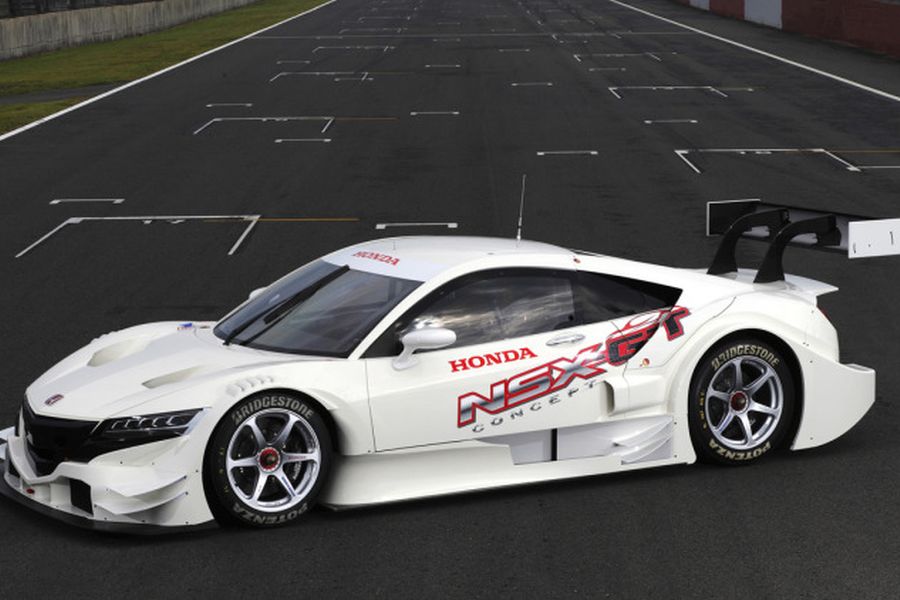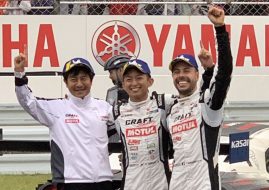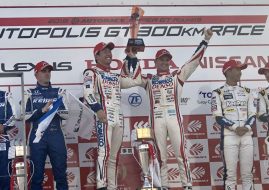Honda NSX Concept-GT: The Beast That Has Yet to Prove Itself
Japanese Super GT Series is a unique competition because it features some cars that aren’t in use in any other competition. Those cars are Honda NSX Concept-GT, Lexus RC-F and Nissan GT-R. Here’s the story about Honda NSX Concept-GT, that entered the Super GT Series in 2014.

NSX Concept-GT was unveiled in 2013 and started racing in 2014
Two-liter 4-cylinder engines replaced V8 powerplants
The current Honda’s race car in the GT500 class of the Super GT Series is based on the concept of the production model NSX, that was introduced in 2012, and it was developed according to the new set of rules that was eligible for the 2014 season. The current regulations are the result of the agreement between Super GT Series and DTM and it was named the ‘New DTM’.
The core difference was the engine, as GT500 cars replaced 3.4-liter naturally aspirated V8 engines with 2.0-liter 4-cylinder turbo engines. German super touring cars will switch to new regulations in 2019.
NSX Concept-GT is a successor of HSV-010 GT
All three new GT500 cars were unveiled in August 2013 at Suzuka Circuit. The mid-engined NSX Concept-GT was a replacement for HSV-010 GT, that has been used since 2010. The 2.0-litre 4-cylinder turbo engine produces about 550 horsepower, and it is transferred to the rear wheel through the six-speed paddle shift transmission.
The dimensions of the car are 4650 x 1950 x 1150mm, with the wheelbase of 2750mm. The minimum weight of the vehicle is 1020 kg (without a driver, fuel and hybrid system). NSX uses Bridgestone’s 300/680R18 front tyres and 330/710R18 rear tyres. The brakes are made from carbon.
The NSX Concept-GT was developed with a hybrid system that features four electric engines on all four wheels, but due to problems with suppliers the system wasn’t activated so far.

One of two victorious Honda NSX Concept – GT cars
Only one win for new Honda NSX Concept-GT in debut season
The competitive debut for NSX Concept-GT and its rivals followed in April 2014, in the first round of the Super GT Series at Okayama Circuit. Honda was represented by five teams: ARTA (Autobacs Racing Team Aguri, Keihin Real Racing, Weider Modulo Dome Racing, Nakajima Racing and Team Kunimitsu).
The highlight of the debut season was the race at Fuji Speedway in August 2014, when Honda took both pole position and victory. The fastest crew in the qualifying was Kaneishi/Tsukakoshi in the #17 Keihin Real Racing Honda, but the victory was taken by Frederic Makowiecki and Naoki Yamamoto in the #18 Weider Modulo Dome Racing car.
Until the end of the season, it remained the only pole and victory Honda had. The team with Lexus and Nissan cars was much more successful, so the best-placed Honda driver was Yamamoto in the fourth place.

Keihin Real Racing’s #17 Honda competed since 2014
One more victory for NSX in 2015
The similar situation repeated in 2015 season, again with five teams in the line-up: ARTA, Keihin Real Racing, Drago Modulo Honda Racing, Nakajima Racing and Team Kunimitsu. The only Honda’s victory was in the sixth round of the championship at Sportsland Sugo, where Takuya Izawa and Naoki Yamamoto were the winners in the #100 Team Kunimitsu’s car. The duo finished third in the final classification of the 2015 season.
The same five Honda teams started the 2016 Super GT season, entering the competition with slightly improved engines, but still without a hybrid system.
Photos: honda.co.jp, supergt.net,






